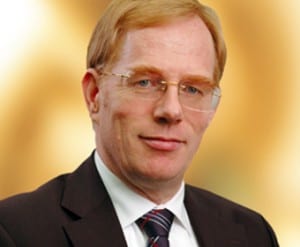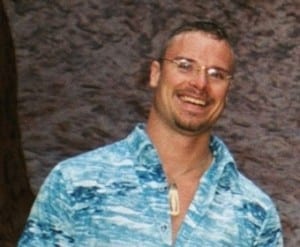An experiment in openness
The newly open source Symbian Foundation is looking to reflect its structural shift in its Symbian Exchange and Exposition event. Mike Hibberd talks to David Wood, the organisation’s ‘catalyst and futurist’ and Lars Kurth, Symbian’s contributor community manager, about open source, open communities and what they hope will prove to be an open Expo.
October 26, 2009

The newly open source Symbian Foundation is looking to reflect its structural shift in its Symbian Exchange and Exposition event. Mike Hibberd talks to David Wood, the organisation’s ‘catalyst and futurist’ and Lars Kurth, Symbian’s contributor community manager, about open source, open communities and what they hope will prove to be an open Expo.
It is, declares David Wood, a former Psion engineer and founding director of Symbian, much more interesting to hear pro-Symbian messages from the mouths of Symbian community members than it is to hear them from the mouths of Symbian spokespeople. What those community members think is important, he says, is more important than what Foundation employees hold to be most crucial.
Wood’s job title in the new Symbian Foundation is ‘catalyst and futurist’ an indicator in itself of some of the ways in which the organisation is looking to evolve. Catalysts aren’t the point of any experiment, after all. They exist purely to effect change and the pace of that change. The community, as Wood would have it, is the experiment—and it’s one he describes as “grand” and “profound”.
The results, never mind the conclusion, are some way off. By Wood’s own admission, the Foundation’s success in shepherding the community it has fostered remains an unknown. “We can’t be completely confident until it’s been done and no doubt we’ll change our minds about how to do some aspects of it along the way,” he says.
“There are two key things, though: First we must have as much discussion and openness as possible, so that there’s as much trust as possible. Second, you do have to elevate people with proven skills so that their voices have more weight in the discussion.
You can’t give equal credence to every single person that happens to pop by and make a suggestion. You have to have this meritocracy, whereby people with proven ability get positions of more authority.” This has much to commend it as a model for political governance. But the Symbian Foundation exists to get commercial product into the marketplace for purposes of competitive trade. And if you look at some of the firms it’ll be competing with—Apple and RIM are the two most successful smartphone vendors in the US, for example—they have succeeded by using something more like dictatorship (how benign depends on who you ask), rather than the kind of one-man-one-vote ethos that the Foundation is looking to apply to its community at large.

davidwood
David Wood, Now Ex-Symbian Catalyst And Futurist
Wood concedes that the success of Apple and RIM appears to argue in favour of the tight control for which they are each renowned. But, he says, there is a great deal of evidence from “the way the internet grew up” that speaks to the value of innovation from outside the castle walls.
“Apple can point to lots of innovation from outside their company in the App Store,” he says. “But that kind of innovation can apply not just to what goes on top of the platform but also in the development of the platform itself. If we get that right, and it’s a big ‘if’, then suddenly that platform will accelerate much faster. There won’t be two or three years between upgrades, there’ll be significant upgrades within 12-month periods.”
He cites Mozilla’s Firefox, which he calls the “best browser in the world” as proof of the success of open source development. Examples such as this, and the growing maturity of open source licensing environments, “gave us the confidence that this was possible,” he says. And, while he doesn’t believe that all software development will be open-source, he is confident, he says that “while Apple and RIM will remain significant players, the really exciting innovation will move to the most open platform.”
To those who favour more traditional methods of software and product development, turning everything over to a disparate community of loosely affiliated individuals and organisations looks, at best, like a triumph of faith over reason. Why should any of the many developers and companies involved return their learning to the community when they could just take advantage of the work of others?
Wood says that, in any open environment, you have to expect a certain amount of ‘free riding’. He estimates that about ten per cent of development work done on the platform will be given back to the community. This might seem a little slim but Wood argues that, with a community of the size that the Foundation is building, this is an ample return. The opportunity to commercialise development work should act as an incentive for companies to return their work, he says. By demonstrating their capabilities and returning their work, or a portion of it, companies and developers can advertise their services, he says.
The Foundation has to facilitate relationships between different people and organisations if its stewardship of the community is to succeed. And here the Symbian Exchange and Exposition event will prove key. The event is changing markedly to mirror the evolution within the Foundation itself, with many of the changes designed to encourage attendees to interact both with one another and with the Foundation.

lars-kurth
Lars Kurth, Symbian’s Contributor Community Manager
As such some elements may not represent the familiar territory of a telecoms trade show. But, as Lars Kurth, Symbian’s contributor community manager, says: “I suppose it is a bit of a departure, but I’ve never done a traditional conference.” Kurth is responsible for organising all of the content at the event, which includes Birds of a Feather sessions (BoFs), technology speed dating and a rule that nobody is allowed to ask a question verbally during keynote sessions.
The idea, another part of Wood’s “grand experiment” is that the show encourages that same meritocracy, where everyone has the same level of opportunity to get their voice heard or—as far as the keynotes go—not. In a move which could prove to be an inspired piece of practicewhat-you-preach Web 2.0 in action, or a misjudged gimmick, all questions in keynote sessions have to be submitted live over Twitter. There is some serious thinking behind this, which is that the Foundation wants to encourage the use of the social network for interaction with the community.
The show cedes power to the community in the form of the BoFs, as Kurth explains. “These are informal discussion groups built around certain technology- or community-related topics. The event organiser provides space where the BoF sessions canbe held and the community organises the sessions itself. We put a booking system in place and made sure half the spaces were filled before we went live to encourage others. Now we have too many and I’ll have to merge some of them together.”
The community members who book the sessions then give feedback to the Foundation. Again this relies on people to do a job for which they are not employed or getting paid. But, says Kurth, motivation is not a problem. “You would only organise a session if you have an interest in the outcome,” he says. “So it’s in your interest to make sure information is collated and fed back at the end of the day.”
Technology speed dating will see exhibitors hold brief meet-and-greet sessions at their stands. The topic might be UI, or location services and, for three minutes, everybody who is interested will converge at the stand in question to swap business cards. When the three minutes is up, the host exhibitor has to ensure that the crowd is dispersed. Another means of identifying kindred community members will see visitors given different coloured stickers on their show badges that denote their areas of interest.
“It’s just about getting people to meet each other,” Kurth says. “That’s one of the key capitals in any open source community.”
Flocking together
The SEE will introduce Birds of a Feather sessions for the first time this year. Here we look at a selection that have been scheduled.
Building knowledge through wiki documentation (October 27th, 15.00, Area 1)
A BoF devoted to discussing how the wiki should be used to present world-class documentation for Symbian developers. We hope to discuss nuts and bolts such as MediaWiki plug-ins and category techniques, and broader topics such as localisation, moderation, patterns and anti-patterns in wiki usage.
Symbian Signed (October 27th, 16.00, Area 1)
By SEE, we will hopefully be in a position to announce some of the planned changes to Symbian Signed-how we’ll make life easier for developers, etc. This BoF will be dedicated to giving everyone at SEE a chance to discuss the planned changes before they are implemented to provide valuable feedback for Symbian and the others involved in making the changes.
Persistent Data, File Systems and Memory-Past, Present and Future (October 27th, 14.00, Area 2)
Fast, efficient and reliable data storage is a requirement for a variety of applications. Whether accessing a Symbian SQL database, storing and retrieving application preferences or managing and accessing multimedia files-all application types rely on file system services and persistence. Come and learn about recent changes in the persistent data and kernel hardware service packages and participate in discussions about new features.
NGMA & OpenMAX components in Multimedia (October 27th, 15.00, Area 2)
The evolution towards a more standards-based multimedia architecture, and how this impacts areas such as device porting, adaptation and modularity of code
Kernel and Hardware Service (October 27th, 15.00, Area 3)
Opportunity to discuss EPL, WDP, SMP, SHAI and potential contributions to the Kernel and Hardware Service package
Social Networks in Mobile (October 27th, 17.00, Area 3)
How do social web services (such as Facebook, Twitter and My Space) impact mobile phone usage? Why do popular web services start as a “desktop thing”? What technologies are relevant when integrating with existing web services?
The future of Augmented Reality
How to create a working framework of standards (October 28th, 14.00, Area 1)
Open-Source Tools for Symbian App Development (October 28th, 14.00, Area 2)
We will discuss the past, present, and future status of GCC, QEMU, Eclipse, and other open-source tools for Symbian application development, focusing on what improvements would most increase quality and usability.
Read more about:
DiscussionAbout the Author
You May Also Like


.png?width=300&auto=webp&quality=80&disable=upscale)







.png?width=300&auto=webp&quality=80&disable=upscale)


_1.jpg?width=300&auto=webp&quality=80&disable=upscale)